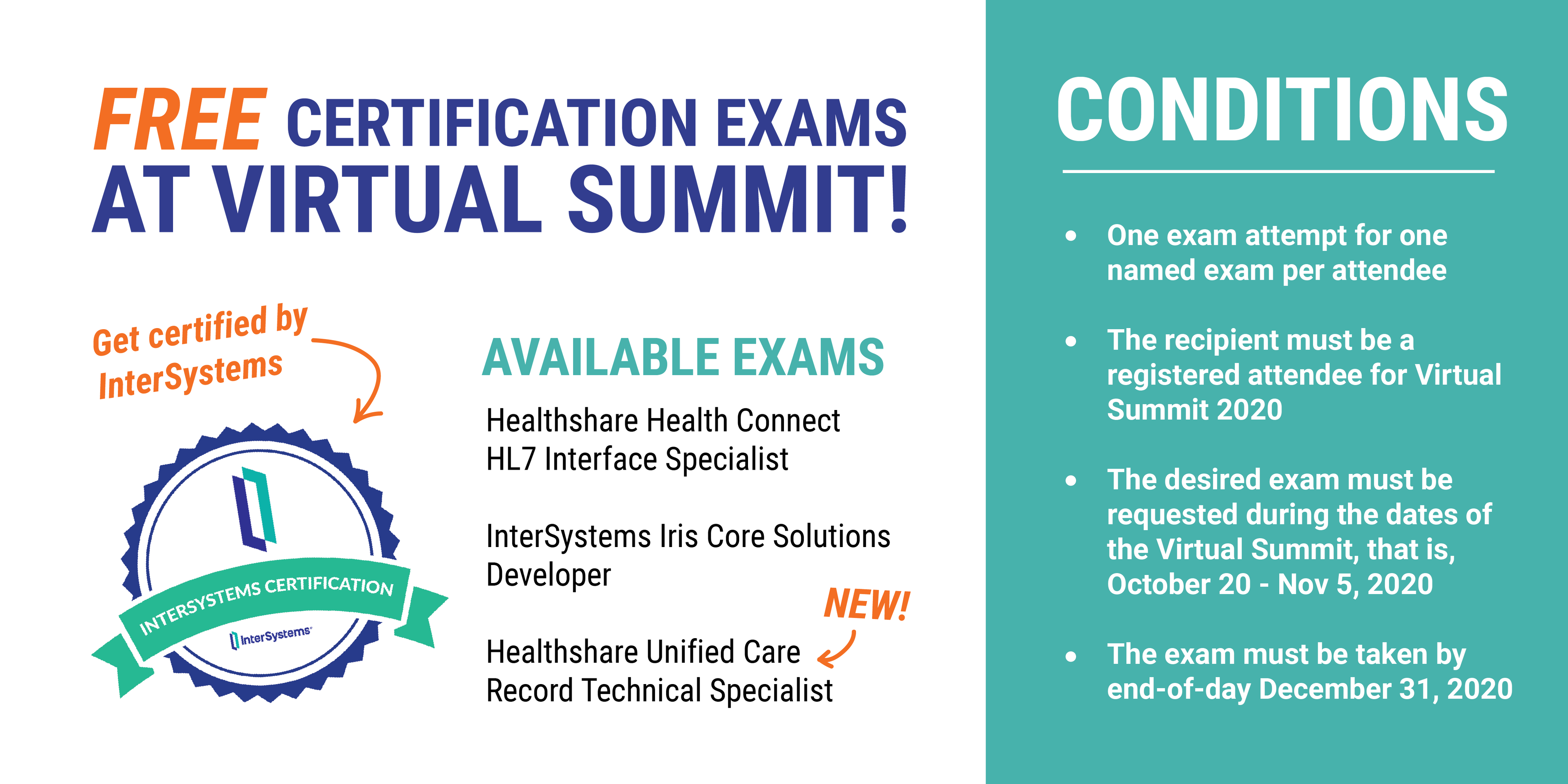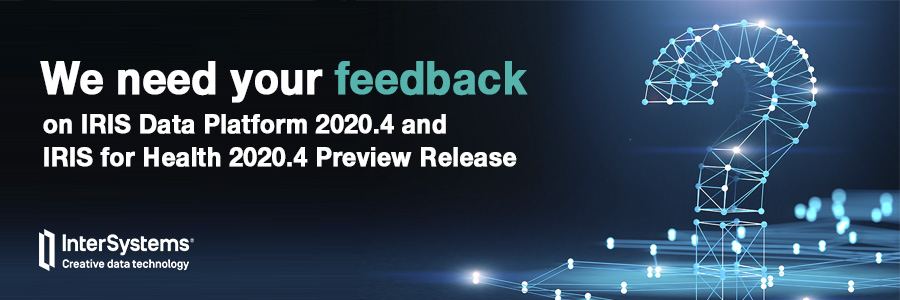Free certification exam attempt for all attendees of Virtual Summit 2020!
InterSystems is proud to offer free InterSystems Certification exam attempts to all attendees of InterSystems Virtual Summit 2020. The one free exam attempt will be made available to all registered attendees and can be used at any time until December 31, 2020.
This is our standard online exam service with online proctoring that is normally priced at $150 per attempt.




.png)
 712
712.png)
.png)

